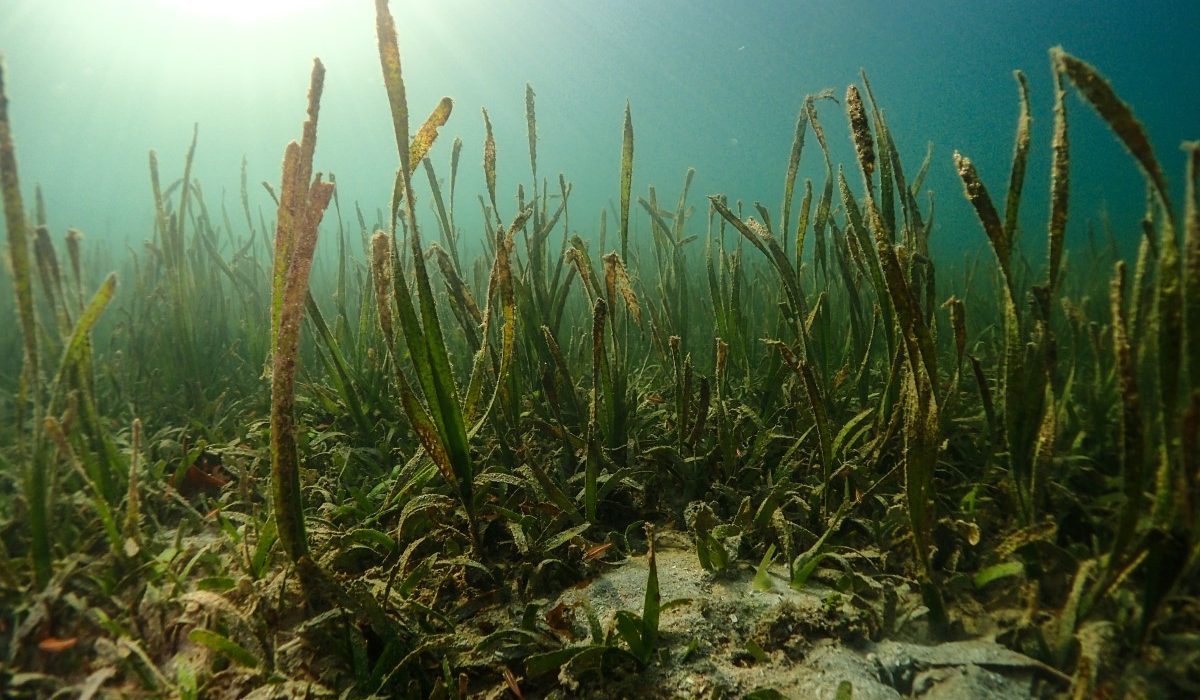A revolutionary study provides new insights into three major climate technologies that aim to protect or boost the blue carbon naturally collected by marine and coastal environments. These breakthroughs include fast initiatives to safeguard the Great Barrier Reef’s ecosystem, satellite-tracked kelp banks in the deep sea, and seagrass sanctuaries in the UK. The study, published in the journal Environmental Science & Policy and contributed to by leading climate scholars from the University of Boston, Aarhus University, and the University of Sussex Business School, expands the comprehension of understudied interventions in marine habitat protection to reduce greenhouse gas emissions.
Overview of Blue Carbon Strategies:
These climate change initiatives, called blue carbon approaches, seek to protect or improve coastal and marine ecosystems as important sources of carbon elimination and storage. Currently, marine organisms acquire and store over fifty percent of the world’s ecological carbon. However, such ecosystems are threatened by acidification, shifts in temperature, extreme weather, and pollution. Previous research suggests that enhanced oversight of these habitats might generate up to 10% of the worldwide emissions reductions required to reach the Paris Agreement targets. While blue carbon initiatives have the potential to cut emissions, create cash, and advance conservation legislation, issues remain concerning their performance and impact on sociopolitical systems.
The Role of Maritime Ecosystems:
“In contrast to the robust background in studying soil and forest mechanisms for carbon management, leveraging aquatic environments in the battle against climate change is comparatively recent and remains in doubt,” said Benjamin Sovacool, lead author of the study and director of Boston University’s the College for Global Sustainability. Sovacool, which is also linked with the University of Aarhus and the University of Sussex Business School, highlights the importance of understanding how new technologies relate to cultural, political, and economic institutions as they spread.
Study Methodology:
Using 46 expert interviews, 38 site visits, and comprehensive study analysis, Sovacool and the co-authors Chad M. Baum, Sean Low, and Livia Fritz of the University of Aarhus assessed the social memoirs, technology, and co-impacts of three significant blue carbon innovations:
- Coral reef conservation in Australia
- Seagrass Rehabilitation in the United Kingdom
- Seaweed production and deep seawater storage in the United States
Coral Reef Conservation in Australia:
Coral reef preservation helps blue carbon efforts because coral tissues utilize and absorb greenhouse gases and bicarbonate. The Great Barrier Reef, known as Australia’s national jewel, is facing a catastrophe and collapse as a result of climate change. Through interactions with 23 local researchers, the research team discovered a narrative entrenched in hope and moral priority, motivating a readiness to investigate diverse and experimental methods ranging from genetic modification to cloud brightening.
Innovations and Co-impacts:
Reef preservation has a positive impact on eco-tourism and fisheries. However, there are also negative consequences, such as the possibility of invading species breakouts. The study emphasizes the importance of innovative, and often controversial, techniques to ensure the reef’s existence and carbon capture capacity.
Genetic editing is one of the more drastic ways being studied, to create more resilient coral species that can endure increased temperatures and acidification. Cloud brightening entails shooting seawater droplets into the atmosphere to improve cloud reflectance and hence lower sea temperatures. Both technologies are still at the experimental stage, and the long-term effects on marine ecosystems are unknown.
Seagrass Rehabilitation in the United Kingdom:
Seagrass restoration sequesters carbon by growing biomass directly and capturing organic particles in seagrass roots and sediments. The research team examined restoration initiatives in the United Kingdom and interviewed 12 seagrass researchers from various universities, entities, and charities such as Project Seagrass. They discovered that restoration narratives emphasize seagrass’s uniqueness, fragility, and individuality, as well as its promise as an efficient and long-lasting carbon storage system.
Problems and Benefits:
Advancement in seagrass restoration necessitates wide, gradual advances in fundamental marine biology, botany, and statistical collection, making it more expensive and time-consuming to implement. However, the likely benefits are enormous, including enhanced water quality and sanitation, increased biodiversity and fisheries, reverted acidification, and prevention of coastal erosion.
One significant experiment includes the utilization of drones and GPS technology to track and map seagrass meadows, allowing for more precise and successful restoration efforts. Cooperation between scientific organizations and neighborhoods has also played an important role in instilling stewardship and assuring the long-term viability of these projects.
Seaweed Production and Deep Seawater Storage in the United States:
Seaweed cultivation minimizes carbon emissions by boosting biomass through the formation of huge kelp banks in the deep ocean. Following 11 interviews, the majority of which were with employees of a firm based in the United States, the researchers discovered an explanation centered on increasing technical innovation and producing wealth, rooted in responsibility for preserving the world’s oceans.
Seaweed farming innovation is deliberately non-participatory, led by a tiny group determined to fast and substantially grow operations. While seaweed cultivation has the potential to boost food production, water purity, and recycling of waste, it involves social acceptance issues as well as the risk of uncontrolled development.
Economic and Environmental Benefits:
Seaweed has considerable commercial potential, with possibilities spanning from biofuels and recyclable plastics to dietary additives and animal feed. Seaweed farms can benefit the environment by increasing marine biodiversity, providing habitat for invertebrates and fish, and improving water quality by absorbing nutrients.
Despite its advantages, seaweed production must be regulated to avoid ecological imbalances such as the extinction of native creatures and the disruption of local ecosystems. Addressing these difficulties requires ensuring sustainable practices as well as interacting with local people.
Conclusion:
The study’s extensive research emphasizes the need to include political, social, and economic concerns in the exploration and implementation of blue carbon technology. As these advances become more widely adopted, understanding their broader implications will be critical to their success in mitigating climate change. This study’s findings represent a crucial step toward achieving marine ecosystems’ potential in global carbon control efforts.

